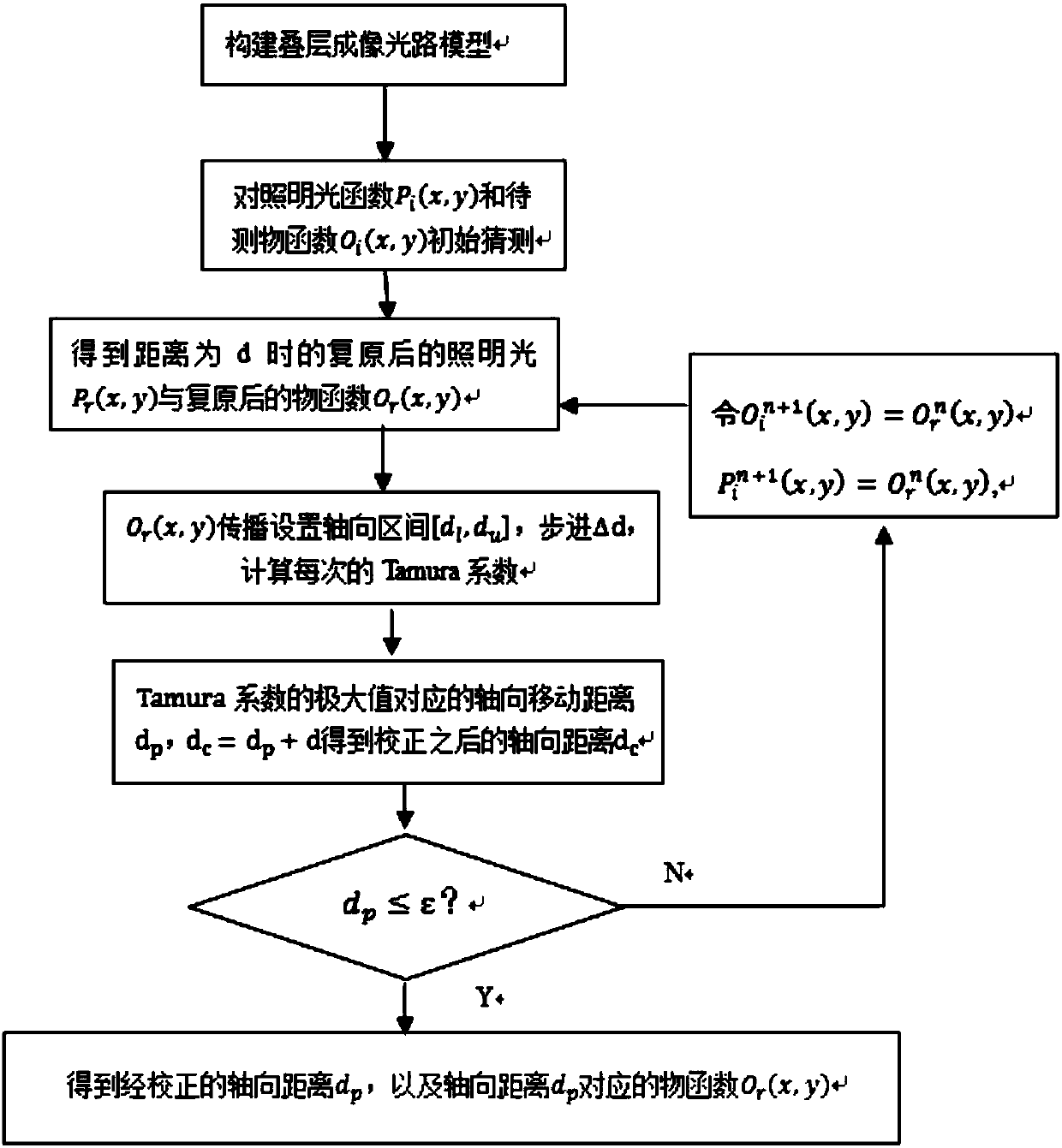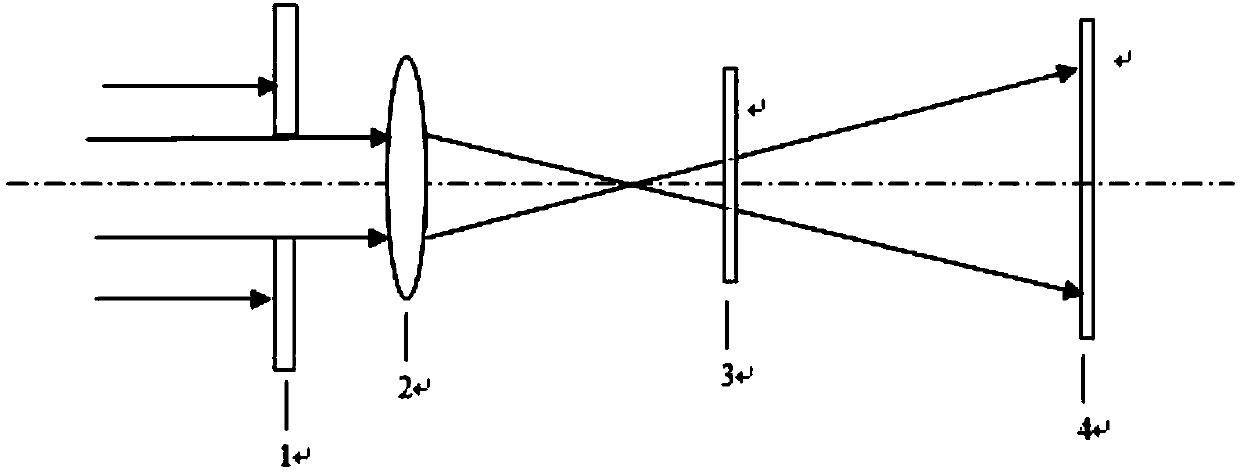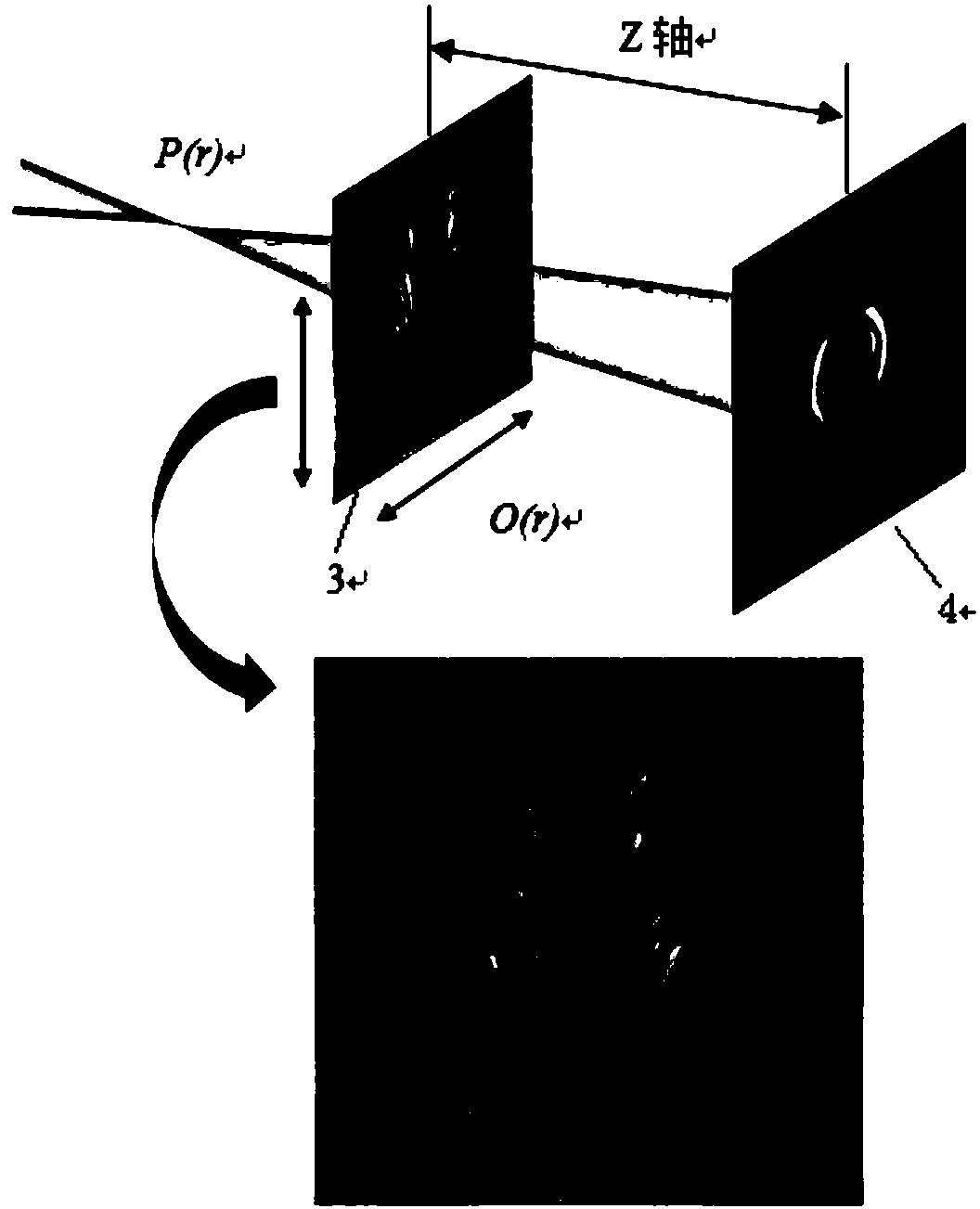Method for eliminating axial distance error between object and CCD through self-focusing iterative algorithm
An axial distance, iterative algorithm technology, applied in the field of optical algorithms, can solve the problem of unresolved image reconstruction, and achieve the effect of fast calculation speed, clear algorithm, and compact optical path.
- Summary
- Abstract
- Description
- Claims
- Application Information
AI Technical Summary
Problems solved by technology
Method used
Image
Examples
Embodiment Construction
[0021] The present invention will be described in further detail below in conjunction with the accompanying drawings.
[0022] combine figure 1 , figure 2 and image 3 , the present invention proposes a method for eliminating the axial distance error between the object and the CCD using the self-focusing iterative algorithm. In the stack imaging process, the axial distance error between the object plane and the CCD target surface will introduce discreteness Error, the specific method steps are as follows:
[0023] Step 1. Construct the stack imaging optical path model:
[0024] The common optical axis is set in turn with He-Ne laser, variable aperture 1, lens 2, object under test 3 and CCD4. The light behind the diaphragm 1 is converged by the lens 2 into a diverging spherical wave, that is, the illumination light, and irradiates the surface of the object under test 3. The object under test 3 is fixed on the two-dimensional electric displacement stage by the holder and th...
PUM
 Login to View More
Login to View More Abstract
Description
Claims
Application Information
 Login to View More
Login to View More - R&D
- Intellectual Property
- Life Sciences
- Materials
- Tech Scout
- Unparalleled Data Quality
- Higher Quality Content
- 60% Fewer Hallucinations
Browse by: Latest US Patents, China's latest patents, Technical Efficacy Thesaurus, Application Domain, Technology Topic, Popular Technical Reports.
© 2025 PatSnap. All rights reserved.Legal|Privacy policy|Modern Slavery Act Transparency Statement|Sitemap|About US| Contact US: help@patsnap.com



